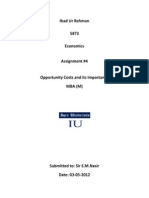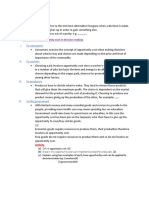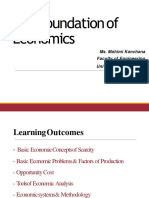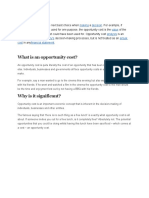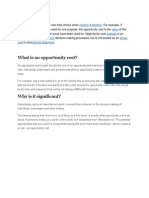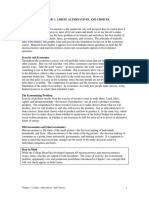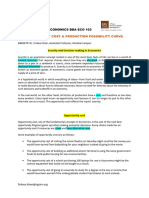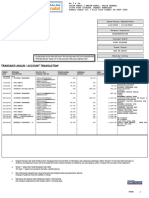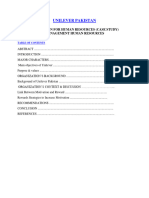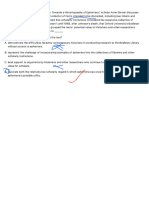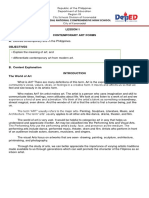0% found this document useful (0 votes)
7 views4 pagesChapter 3
Chapter 3 discusses the concept of opportunity cost, which is the cost of choosing one alternative over the best alternative forgone. It highlights how opportunity cost influences decision-making for consumers, workers, producers, and governments, emphasizing the need to consider what is sacrificed in various choices. The chapter also distinguishes between economic goods, which have an opportunity cost, and free goods, which do not.
Uploaded by
Vihaan goelCopyright
© © All Rights Reserved
We take content rights seriously. If you suspect this is your content, claim it here.
Available Formats
Download as PDF, TXT or read online on Scribd
0% found this document useful (0 votes)
7 views4 pagesChapter 3
Chapter 3 discusses the concept of opportunity cost, which is the cost of choosing one alternative over the best alternative forgone. It highlights how opportunity cost influences decision-making for consumers, workers, producers, and governments, emphasizing the need to consider what is sacrificed in various choices. The chapter also distinguishes between economic goods, which have an opportunity cost, and free goods, which do not.
Uploaded by
Vihaan goelCopyright
© © All Rights Reserved
We take content rights seriously. If you suspect this is your content, claim it here.
Available Formats
Download as PDF, TXT or read online on Scribd
/ 4













